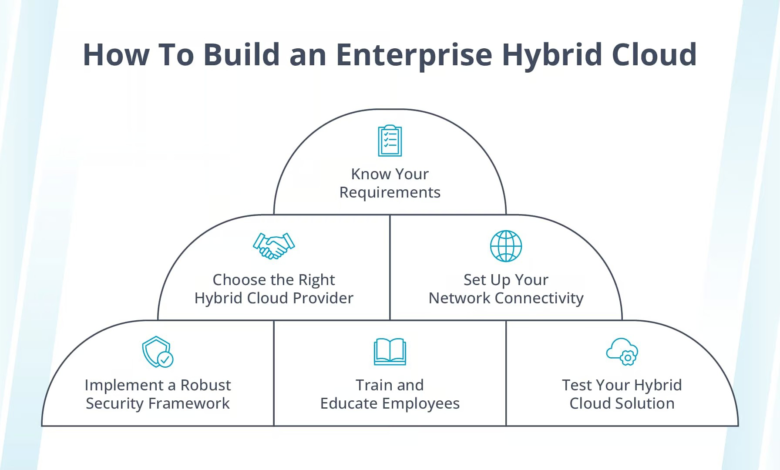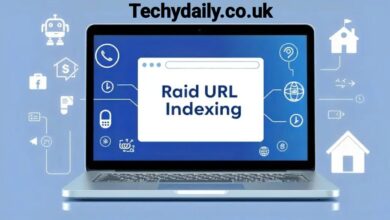Building a Robust Cloud Connectivity Strategy for Enterprises

The evolution of cloud computing has significantly transformed the business landscape, making it essential for enterprises to develop a robust cloud connectivity strategy. This strategy ensures seamless integration with cloud service providers (CSPs), enhances operational efficiency, and addresses common connectivity challenges. Despite initial cybersecurity concerns, the cloud has become mainstream, with over 60% of security professionals considering the risk of breaches in public cloud environments comparable to or lower than on-premise systems.
The Significance of Cloud Connectivity
Cloud computing offers enterprises numerous benefits, including scalability, cost-efficiency, and flexibility. The rapid adoption of cloud services is driven by the need for businesses to be agile and responsive to market demands. According to recent statistics, the global cloud market is projected to reach $623.3 billion by 2023, with 83% of enterprise workloads expected to be in the cloud.
Benefits Driving Cloud Adoption
Enterprises are increasingly embracing cloud solutions due to several key benefits:
- Limitless Expansion: Cloud services enable businesses to adjust resources according to their needs, promoting optimal performance without excess provisioning.
- Flexible Pricing: Various service level agreements (SLAs) offer pricing structures that cater to diverse business requirements.
- Swift Implementation: Cloud environments can be deployed rapidly without significant upfront investment.
- Maintenance by CSPs: The responsibility for maintaining cloud infrastructure lies with CSPs, reducing the burden on enterprise IT teams.
- Pay-as-You-Use Model: Enterprises only pay for the services and resources they consume, optimizing operational costs.
Challenges of Connecting to the Cloud
While cloud computing offers substantial benefits, enterprises face challenges in ensuring reliable and secure connectivity. Traditional networking models are not designed to support the dynamic nature of cloud services, leading to issues such as latency, security vulnerabilities, and service outages.
The Weak Link: Public Internet
Many enterprises initially rely on the public internet for cloud connectivity due to its ease of setup. However, this approach has several drawbacks:
- Latency and Congestion: Public internet routes are dynamic and shared, leading to congestion and increased latency. This can result in poor performance for critical applications.
- Security Risks: The public internet is susceptible to cyberattacks such as Distributed Denial-of-Service (DDoS), posing significant risks to enterprise data and operations.
- Multiple Handoffs: Data packets are routed through multiple internet service providers (ISPs), increasing the potential for instability and security breaches.
Connecting to the Public Cloud
Enterprises have several options for connecting to the public cloud, each with its considerations and challenges.
The Public Internet
Although the public internet is the easiest method to connect to the cloud, it is not always the best option due to performance and security issues. Enterprises using the public internet for cloud connectivity must address these vulnerabilities to ensure reliable service delivery.
Virtual Private Network (VPN)
A VPN provides a more robust path across the public internet by creating a private network over an open network. However, VPN connections still face performance issues due to inefficient routing, network attacks, and congestion.
Dedicated, Direct Cloud Connections
Direct cloud connections, such as Azure ExpressRoute or Google Cloud Interconnect, offer a superior alternative to the public internet and VPNs. These connections provide a direct link to CSPs, eliminating the performance, quality of service, and security problems associated with the public internet.
Direct Cloud Connectivity Solutions
CSPs like Amazon Web Services (AWS), Microsoft Azure, and Google Cloud Platform offer partner programs and collaborate with network service providers to enhance cloud connectivity. These direct connectivity solutions enable enterprises to bypass the public internet and connect to cloud services through dedicated links, ensuring stable and secure data transfer.
Cloud On-Ramps
Cloud on-ramps are dedicated interconnections located at data centers where CSPs are present. Enterprises can connect their equipment to the CSP via Layer 2 Ethernet, providing speeds from 50Mbps to 10Gbps. For those not located near a cloud on-ramp, global connectivity providers can offer backhaul connectivity to directly connect enterprise premises to public clouds.
The Rise of Network as a Service (NaaS)
NaaS platforms, such as Infiny by Epsilon, revolutionize cloud connectivity by automating the provisioning of direct cloud connections. This model reduces the need for upfront investment in networking infrastructure and closes the skill gaps that IT infrastructure leaders face. NaaS platforms provide advanced tools and cloud ecosystems, simplifying the management of multi-cloud environments and ensuring secure, reliable connections.
Real-World Case Study
A multinational investment holding conglomerate in Asia faced challenges in accessing its cloud-based enterprise resource planning (ERP) system. The organization required remote access to its ERP system deployed on Microsoft Azure in Hong Kong. By leveraging Epsilon’s Cloud Connect solution, the enterprise achieved a cost-efficient, secure, and reliable connection to Microsoft Azure, enabling seamless ERP system access across multiple business units.
Conclusion
Building a robust cloud connectivity strategy is crucial for enterprises aiming to leverage the full potential of cloud computing. By opting for dedicated, direct cloud connections and utilizing NaaS platforms, businesses can overcome the limitations of traditional networking models and public internet connectivity. This approach ensures secure, reliable, and high-performance access to cloud services, supporting enterprises in their digital transformation journey and preparing them for the future.
Key Takeaways
- Invest in Direct Cloud Connections: Bypass the public internet to enhance security, performance, and reliability.
- Utilize NaaS Platforms: Simplify cloud connectivity management and reduce infrastructure investment.
- Address Connectivity Challenges: Ensure your network infrastructure can support the dynamic nature of cloud services.
- Plan for the Future: A robust cloud connectivity strategy prepares your enterprise for next-generation IT demands.
For more information on cloud connectivity solutions and how to enhance your enterprise’s cloud strategy, explore resources from leading CSPs and connectivity providers.



